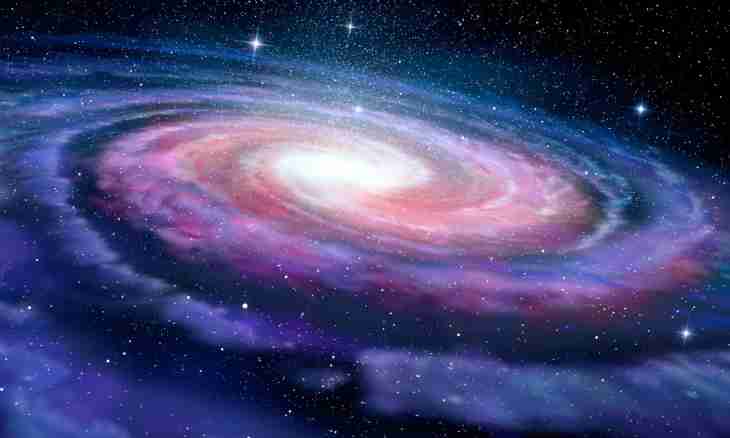Many billions of stars are scattered in a sky. And it is unimportant that a human eye sees only a small part of this brilliant magnificence – they are there. But even the scientists armed with modern powerful devices cannot count the exact number of the star worlds – galaxies – in a part of the Universe available to observation. But also the rough estimate shakes imagination. It is supposed that their more than 150 billion. And in one of them there is such native to people of Earth a solar system.
What is the galaxy
The galaxy is the huge space system consisting of a huge number of stars and star clusters. Except them also gas-and-dust clouds and fogs, neutron stars, black holes, white dwarfs and dark matter – the invisible and not studied component to which share 70% of all mass of the Universe fall are a part of galaxies.
All objects are connected among themselves by forces of gravitation and are in the constant movement around the general center. There is an opinion which more often is confirmed recently by scientific research that in the center of the majority, and maybe all galaxies, are over massive black holes. Considering the theory of expansion of the Universe, scientists drew a conclusion that gas-and-dust fogs became substance from which galaxies were created more than 12 billion years ago.
Classification of galaxies
Today there are 3 known classes of galaxies: spiral or disk, elliptic and irregular or wrong. Spiral – the most often found type of galaxies. From outside they look as flat disks against the background of which one or several sleeves twisting rather central region are allocated. Such galaxies include stars of different age. Spiral sleeves are allocated at the expense of a blue luminescence of a large number of young stars in them located. Some of these systems have a star crossing point from which spiral sleeves depart in the center. Elliptic galaxies in most cases have a red-orange range of a luminescence as consist generally old stars. Some of them have almost ideally round or slightly flattened form. In such galaxies of a star quite compactly are located around the general centrak irregular or wrong about a quarter of all known systems belongs. They have no pronounced form and rotary symmetry. It is supposed that some wrong systems resulted from collision or close passing relatively each other of spiral or elliptic galaxies. As a result of gravitational interaction their structure was broken. In some wrong systems the scientists found the remains of former galactic structures. One more hypothesis – some of the wrong systems are still very young, their galactic structures just did not manage to be created.
Milky Way
The solar system together with all planets which are its part belongs to the galaxy the Milky Way. It is the first of the galaxies opened by the person. The Milky Way is visible from any point of the earth's surface in the form of not a bright smoky strip. Scientists consider that from 200 to 400 billion stars are its part. The Milky Way – the galaxy of spiral type. If people of Earth could look at it from outside, then would see quite thin – thickness only several thousands of light years – a disk which diameter exceeds 100,000 light years. The most part of stars is located in this main disk-shaped body of the galaxy. In the central part of a system there is a galactic kernel consisting of a huge number of old stars. According to the latest data is in the center of a galactic kernel over massive - and perhaps even not one - a black hole. Behind the central region the gas ring which is a zone of active star formation is located. Half a century back scientists established that the Milky Way has 4 main spiral sleeves departing from a gas ring. These are zones of high density where there is also a formation of new stars. Quite recently one more sleeve remote from the central region was found. Speed of the movement of stars on galactic orbits differs from the speed of the movement of spiral sleeves and decreases in process of their distance from the center of a system. The sun is at distance of 28,000 light years from the center of the galaxy. It does a whole revolution around the central region for 250 million years.

